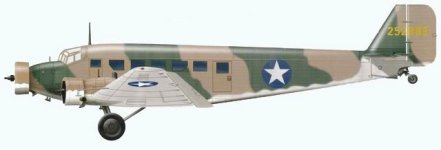THE PILGRIM
Member
It's a JU-52.
Ordnanceman beat richardman1992 by a silly millimeter.
Now we can work on the stranger, nothing to do with Merl Haggard's band.
Some of you guys can probably do it without a picture.
And of course it's another non-US plane.
Ordnanceman beat richardman1992 by a silly millimeter.
Now we can work on the stranger, nothing to do with Merl Haggard's band.
Some of you guys can probably do it without a picture.
And of course it's another non-US plane.


